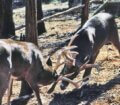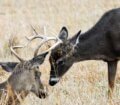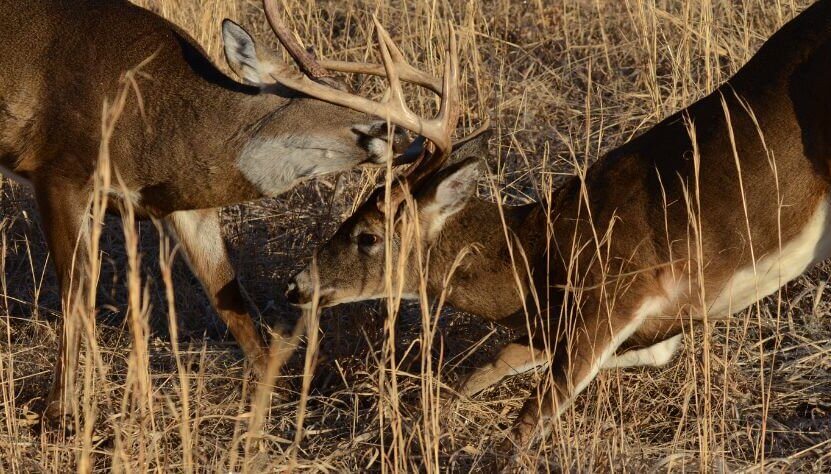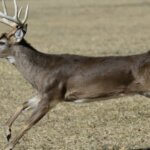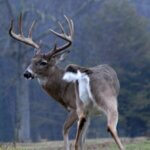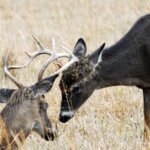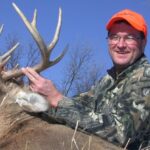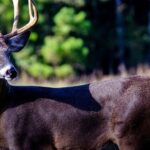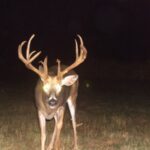Editor’s Note: Bucks fight for several reasons. When you hear antlers clashing, that doesn’t necessarily mean that bucks are fighting to the death. Instead, the bucks only may be pushing each other around. The more you know about buck fights, the better you’ll understand when to go and when to stay when you hear antlers clashing.
Dr. Harry Jacobson:
Dr. Harry Jacobson, a professor emeritus in the Department of Wildlife and Fisheries at Mississippi State University, explains that, “Some buck fighting takes place all year round. A dominance order begins to become established immediately after birth. As six-month-old fawns mature, a pecking order starts to take shape. Most of the fighting, if there is any fighting at this time, involves a flailing of hooves or aggressive posturing initially, until the bucks get their first sets of antlers. Once the bucks’ antlers are hardened, fighting can occur in the more-traditional manner with which we’re familiar.

“I’ve seen some full-fledged, down-and-out, knock-out battles between mature bucks before the rut. In fact, about the time bucks rub out of velvet, some sorting out of dominance occurs which may prevent combat later on in the season when the rut arrives.
“But generally, the bucks are just basically playing in the prerut. When bucks spar, they’re testing one another, and they’re also sharpening their fighting skills without getting into full-fledged combat. Much of this sparring is similar to what a father and his son do when they’re fooling around. Often an older buck and a younger buck will spar, and the older buck will allow the younger buck to test himself. Younger bucks begin to spar as soon as they come out of velvet as part of their maturing process. They’re learning the behavior that will at some point in the future be significant to them either in breeding or not breeding.”
Terry Rohm:
Terry Rohm, longtime avid deer and turkey hunter of Buckhead, Georgia, has studied deer and deer behavior as an active hunter most of his life. “From what I’ve observed in the field watching bucks before the rut, sparring is a way bucks feel each other out,” Rohm reports. “Aggressive fighting doesn’t really take place but rather is a push/shove match. The bucks know they’ve got antlers on their heads, and they’re building-up their necks for the rut. Or, they may be brothers or have lived with each other for most of their lives. Sometimes a push/shove match resembles a couple of kids playing.”
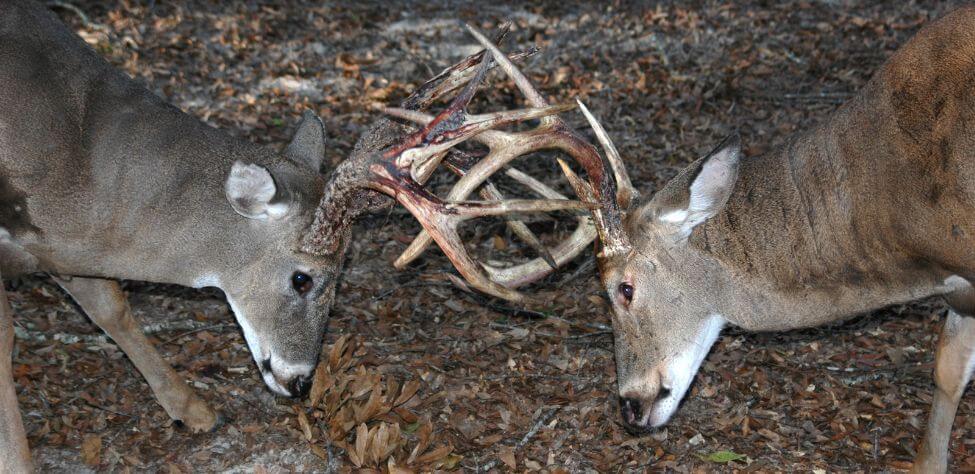
David Nelson:
David Nelson, retired wildlife biologist for the State of Alabama, observed that, “Although bucks start to spar early in the season, the fight is not a fierce one for dominance, but often dominance plays a role in it. Some sparring goes on as soon as the bucks have hard antlers. As testosterone levels increase, the deer’s velvet is shed, the antlers begin to get hard, and the bucks will spar.”
Tomorrow: More About Prerut Deer Fights

How to Hunt and Take Big Buck Deer on Small Properties
In this book, you’ll hear from 14 hunters who either have gained permission or leased properties as small as six acres to as much as 250 acres, and how they consistently take older-age-class bucks off these little lands.
VERSIONS: AUDIBLE, KINDLE & PRINT

Jim Crumley’s Secrets of Bowhunting Deer
Using a black magic marker and a gray work jumpsuit, Jim Crumley of Buchanan, Virginia, drastically changed the nature and purpose of hunting camouflage when he created the first sportsman’s camouflage – Trebark. Crumley’s love of bowhunting and his desire to be more invisible changed hunting clothing forever.
In this hunting guide, he shares the wisdom that he’s learned throughout his lifetime about how to be a hunter, how to find a deer lease, how to scout for deer, and more.
Special features include how to:
- Have a magic 60 acres to hunt
- Decide the best equipment to use
- Find deer year-round
- Locate land to hunt
- Know the best place to put your tree stand
- Get bucks within bow range
VERSIONS: AUDIBLE, KINDLE & PRINT

How to Hunt Deer Like a Pro
How do you know if the land you hunt has a trophy deer on it? Wildlife manager Bob Zaiglin, of Uvalde, Texas and Jim Crumley, the father of modern-day hunting camouflage, tells you how to find out. GPS can make finding and taking that trophy buck easier. This hunting guide will teach you how to hunt big bucks where no one else can find them, how to call deer, and how to become versatile as a deer hunter, so that if one deer tactic doesn’t work, another one will.
In the chapter, “How to find Bucks at Scrape,” Dr. Keith Causey, retired professor of Wildlife Science at Auburn University, describes the best way to hunt a scrape.
Brad Harrison of Neosho, Missouri, is a nationally-known videographer, professional deer hunter and master at calling deer. Another master is Will Primos of Primos Game Calls. These two experts will tell the best deer calls and when to use them in this book.
And for over 20 years, Bo Pitman, lodge manager of White Oak Plantation, has been studying deer movement patterns. He explains what types of conditions are best for predicting deer movement.
VERSIONS: AUDIBLE, KINDLE & PRINT

Deer hunting and deer hunters are drastically changing each year. To learn new techniques for hunting deer and have more places to hunt, I’ve interviewed some of the best deer hunters in the nation and share their tactics in How to Hunt Deer Like a Pro: Volume II.
In Chapter 10, Jacob Lamar tells you his tactics for consistently taking older-age-class bucks on public lands in several states. Chapter 11, Bob Walker explains how to find places on public lands where you can hunt that 99 percent of the other hunters never have considered hunting. The Bonus Chapter with David Ramey tells you how, where, when and with what equipment to take big Kansas bucks on public lands by hunting in 100-degree weather when others won’t hunt.
Chapter 13, Mark Drury, his family and his guests take mature bucks every season by having more small places to hunt rather than one large property. Drury explains the strategy of having satellite farms to hunt that only may be 50-150 acres each or less. Chapter 15, Pat Reeve, who hunts far-northern states and Canada, says, “I don’t like hunting for mature bucks until the weather is 20 degrees or less.” Chapter 4, Dr. Larry Marchinton says that funnels are the most-reliable stand sites to hunt for big bucks and tells why.
VERSIONS: AUDIBLE & PRINT

